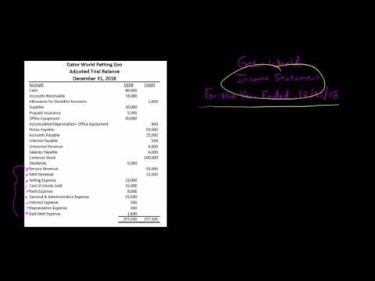
In cases where the customer refuses all contact and payment, a business may choose to sell the debt to a collections agency as a last resort. To begin the ordering and Accounts Receivable process, a customer will place an order that needs to be approved by the business. Once the company receives and approves this order, it generates a sales order which includes details about quantity, price, payment date, and any other bookkeeping for nonprofits relevant terms of sale. Accounts Receivable (AR) is the money that customers owe to a business for goods or services provided. When customers make a purchase on credit, that debt is added to the business’s Accounts Receivable. At Upflow, we provide solutions to help you collect customer payments effortlessly and efficiently.
How can small businesses manage accounts receivable effectively?
- The misconception of payments being a technical one-step process and is only the finance team’s responsibility needs to be challenged.
- This is a good indicator that they may be struggling with their finances which increases the risk in doing business with them.
- In cases where all attempts at collection management fail, a business may have no choice but to write off the bad debt.
- It’s an asset because it has value, and it’s a current asset because it’s expected to be collected within the next 12 months.
- Efficiently processing these payments is essential for accurate financial records.
Accounts receivable management refers to the process of managing and tracking the payment due from customers for the goods and services purchased on credit. It includes tasks such as tracking invoices, collecting payments, examining and mitigating credit risks, and resolving disputes. Keep in mind that if you think that outsourcing your AR management will solve the issue of collecting unpaid invoices then you are wrong. The issue often lies internally and only you can fix this within your business. Software like Upflow for instance centralizes and tracks real-time customer payment timelines and cash applications.
Clear collection plans
A lower DSO indicates a faster collection of receivables, while a higher DSO may imply potential cash flow problems. Many collection issues stem from customer dissatisfaction with post-sales support. As a member of the finance team, you should ensure that all sales-related documentation reaches the customers timely. Additionally, you can streamline the invoicing process with meticulous attention to detail. However, the benefits go beyond materializing sales and improving cash flows.

Your customer data should also include accurate information about your clients. For example, if you have the wrong contact address for your client, then you can send child tax credit 2021 invoices to the wrong person resulting in late payments. It’s vital that you keep clear and organised records of your customer data.
Accounts receivable (AR) represents the money owed to a company by its clients for goods or services that have been provided but not yet paid for. In contrast, accounts payable (AP) is the money a company owes to its suppliers for goods or services received but not yet paid for. In essence, AR is an asset, representing incoming funds, while AP is a liability, representing outgoing funds. No company, no matter what size, can afford to take their eye off their management and expect their business to grow. That’s why it’s imperative that you get a good grip on managing your accounts receivable and take every step necessary to make sure you are keeping track.
Make Payments Easy for Customers
By utilizing AR automation technology, companies can streamline tasks like generating invoices, sending reminders, and tracking payments. As a result, businesses can expedite revenue collection, decrease errors, and enhance customer satisfaction. In recent years, the use of accounting software for managing financial processes has grown in importance. This software facilitates the seamless handling of various accounting tasks, including journal entries and maintenance of the general applications open for ontario small business support grant ledger. By effectively integrating technology into accounts receivable management, businesses can expedite cash flow, reduce human errors, and improve overall efficiency. Accounts receivable (AR) is a current asset on the balance sheet of a company.
Accounts Receivable is the amount a business holds in ongoing customer debts. An efficient Accounts Receivable process is key to ensuring good cash flow, maintaining positive customer relations, and collecting payments. A low DSO means that customers are paying promptly after receiving their invoices and that your team is quickly processing the payments.
Key Performance Metrics for Effective Accounts Receivable Procedures
In B2B transactions, particularly those involving deferred payments, maintaining high-quality standards is essential. Quality should encompass not only the products or services you provide but also the quality of customer interactions at every stage of engagement. Ensure that a commitment to quality permeates every aspect of your operations, from production and logistics to inventory management and your finance department. Cash reconciliation, or effective record-keeping, is important for generating accurate financial records and ensuring all payments are resolved. Promptly recording all transactions makes it easier to track any unpaid invoices and keep all financial records up to date.
Many organizations still rely on manual invoicing, phone follow-ups, and archaic data systems. Days Sales Outstanding (DSO) is another valuable KPI that measures the time it takes for a company to collect payment after a sale is made. This metric helps evaluate the effectiveness of credit and collection policies, as well as customer payment habits.





